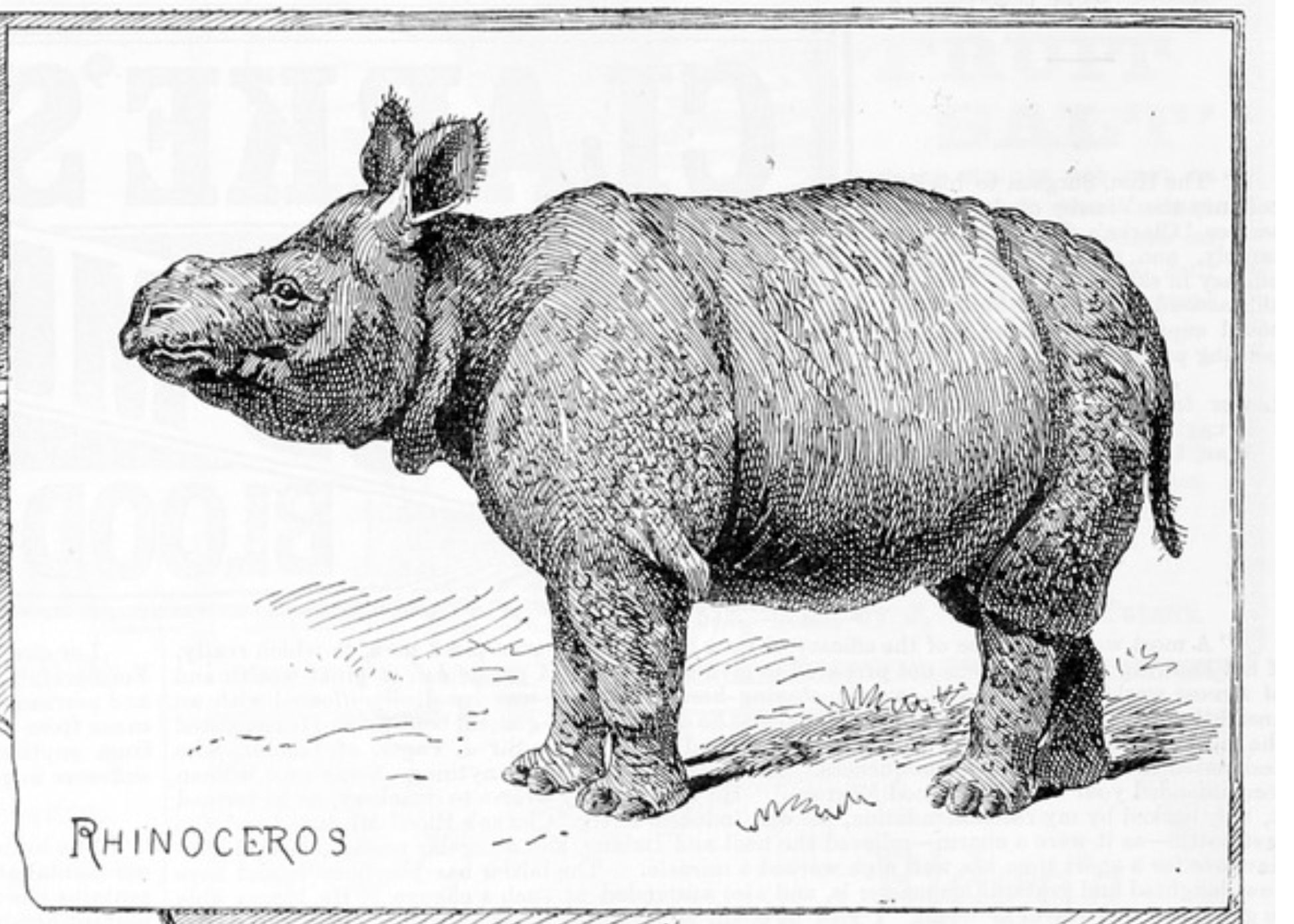
Cryptozoology’s had a curious hold over Geelong for a long time. Bunyips and curlews, Otway panthers and melanistic leopards, pumas, Tasmanian tigers, even yowies, have been reported down the years.
More than a few other mysterious goings-on of unclear origin have also tweaked the fascination of locals: explorers, shipwrecks, artefacts and tales that fall anywhere between urban myth, legend and outright malarkey.
My favourite is the sulphur-crested cockie perched above the Madonna and Child in a 1497 Italian painting, Madonna della Vittoria, by Andrea Mantegna with links to Geelong’s Limeburners Point on the edge of Eastern Park.
It surfaced about 10 years ago after a kangaroo was discovered in a Portuguese liturgy musical score from 1580 that went on exhibition in New York. Or maybe it’s an aardvark, a Melbourne academic suggested.
Either way, the works were debated as evidence of some sort that the enigmatic Geelong Keys unearthed at Limeburners in 1847 might have been left by Portuguese navigator Cristavao de Mendonca centuries earlier.
The story grew legs courtesy Geelong author Ken McIntyre’s 1970s Secret Discovery of Australia and a bollard of Mendonca now graces the nearby shoreline.
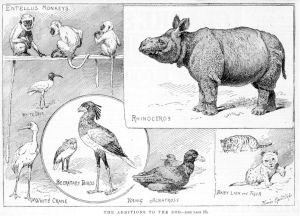
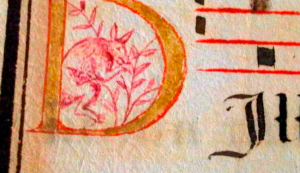
Animals from the Bancoora. Kangaroo in Portuguese liturgy musical score, 1580.
The keys disappeared, although one may have wound up in Van Diemen’s Land and might still be hidden somewhere there – a suggestion seemingly not lost on artist-author Robert Ingpen whose famed Poppykettle fable features the keys as ballast.
His sequel Poppykettle Papers features a chest, found in a Tassie barn, full of more details about their sojourn.
Tassie has inspired another mystical treasure finding from Geelong artist Andrew Delaney, whose recent exhibition Darwin: A Reimagining brought to light a chest of historical artefacts purportedly left behind in Hobart when the famous evolutionist set sail on The Beagle back to England in 1836.
Among the works is a delightful bit of cryptozoology with fossils, a creation chessboard battlefield dinosaurs facing off against a phalanx of Christian authorities, skulls, eggs, monkeys ….

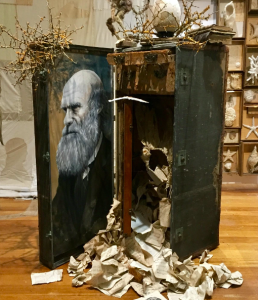
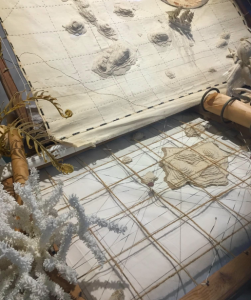
Madonna della Vittoria. Darwin’s lost chest, and maps.
It’s like a mini-museum of scientific Victoriana with its Tarzan-like ape-man, tiny finches wrapped and packed for travel, an ethereal hanging Beagle sun-catcher, palaeontological skeletons, marine and bottled specimens, logbooks, topographic maps, microscopes, plants, squid – even a vicious-looking crown of thorns, reflecting Darwin’s trials as much as Christ’s.
Reminds me of another zoology history mystery; the famed but missing giant leg-bone recovered from Lake Timboon in 1845 that sent Geelong into a fit of hysteria after a local Aborigine declared it a bunyip bone and showed the deep scars he’d sustained from the critter.
His fellows related horror stories, killings at South Geelong and the nearby Barwon Lakes, and described the animal as part-bird part-alligator. Duly reported in this paper, it was more than enough to scare the socks off locals for several weeks.
The bone has vanished over time, though, possibly to England somewhere as was the practice.
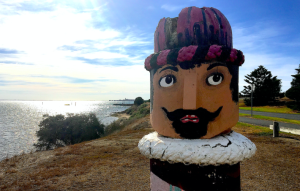 .
. 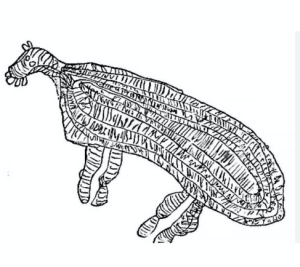
Cristavao Mendonca. Bunyip, 1848.
Bunyip stories have since been put down to megafauna diprotodons, to curlews with their booming night cries, mad bulls, outsized wild dogs – and crocodiles, which might sound a bit far-fetched until you realise a whale made its way into Lake Connewarre back in 1861.
Local Tassie tiger sightings remain apocryphal, some attributed to the pub drinker trick of painting stripes on pet greyhounds. I’ve seen zebra Clydesdales at Ballarat, by the way, an old pub trick from the Gold Rush.
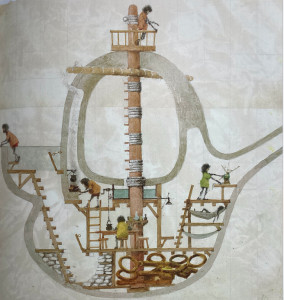 .
. 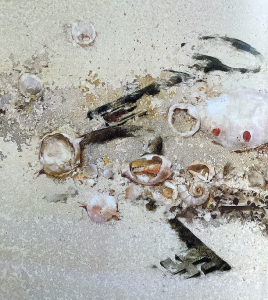
The Poppykettle and keys.
Panther sightings might be sheeted to private zoos from colonial days, with the melanistic leopard, renowned for its shyness, a popular possibility. As for yowies, well, there are blokes who swear by them but sightings are very few and far between and they might just fall into the malarkey category.
And the rhinoceros washed up with the Bancoora shipwreck at Breamlea? Yep, that one’s true, happened back in 1891. Elephant on board, too, and monkeys and cranes and various other critters headed for private zoos.
No pumas or panthers, though. They must have been on a different shipwreck.
This article appeared in the Geelong Advertiser 4 December 2023


